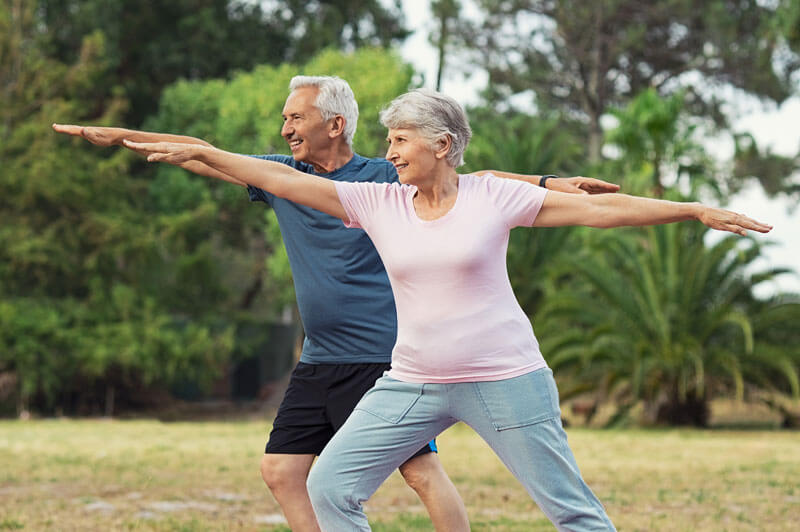As we age, staying active becomes increasingly important. Our bodies change, our muscles weaken, and our joints become less flexible. But that doesn’t mean we have to resign ourselves to a sedentary lifestyle. In fact, it’s quite the opposite. Maintaining a regular exercise routine can have tremendous benefits for our physical and mental well-being as we grow older.
I’ve always been an active person, but as I entered my forties, I started to notice some changes in my body. I wasn’t as nimble as I used to be, and I could feel my muscles getting tighter and weaker. It was a wake-up call for me. I knew I wanted to stay fit and healthy as I got older, so I made a commitment to myself to prioritize my fitness routine.
One of the first things I did was to consult with a personal trainer who specializes in working with older adults. She helped me design a workout program that focused on strength training, flexibility, and cardiovascular endurance. This combination of activities would not only help slow down the natural aging process but also reduce the risk of developing chronic diseases.
Strength training became the cornerstone of my fitness routine. It’s not about bulking up or lifting heavy weights but rather about building and maintaining lean muscle mass. As we age, we naturally lose muscle, so incorporating resistance training into our workouts can help counteract this process. Using resistance bands, free weights, or even our own body weight, we can strengthen our muscles and improve our overall strength and posture.
Flexibility is another crucial element in staying active as we age. Stretching exercises can help improve joint mobility and prevent injuries. Yoga and Pilates have been particularly beneficial for me in this regard. They not only help me maintain flexibility but also promote balance and coordination, which becomes increasingly important as we age.
Cardiovascular exercise is vital for our heart health, regardless of our age. Engaging in activities that increase our heart rate, such as brisk walking, swimming, or cycling, can improve cardiovascular fitness and endurance. It’s important to find activities that we enjoy and can stick with long-term. For me, dancing has been a fantastic way to get my heart pumping while having fun at the same time.
It’s crucial to remember that staying active is not just about physical fitness; it’s also about our mental well-being. Exercise has been proven to release endorphins, those feel-good hormones that can boost our mood and reduce stress. Regular physical activity can have a tremendous impact on mental health, especially as we navigate the challenges that come with aging.
In addition to the physical and mental benefits, staying active as we grow older can improve our quality of life and independence. By maintaining our strength and flexibility, we can continue to perform daily tasks with ease and reduce the risk of falls and injuries. It allows us to stay engaged in activities we love, whether it’s playing with grandchildren, traveling, or pursuing hobbies.
However, it’s important to listen to our bodies and make modifications as necessary. As we age, we may need to adjust our workouts to accommodate any existing health conditions or physical limitations. That’s why it’s always a good idea to consult with our healthcare provider before starting a new fitness program.
In conclusion, staying active as we age is not only possible but also imperative for our overall well-being. It’s never too late to start prioritizing our fitness and making a commitment to ourselves. Engaging in a combination of strength training, flexibility exercises, and cardiovascular activities can help slow down the natural aging process, improve our physical and mental health, and enhance our overall quality of life. So, let’s lace up those sneakers and embrace the benefits of fitness as we journey through the remarkable stages of life.
